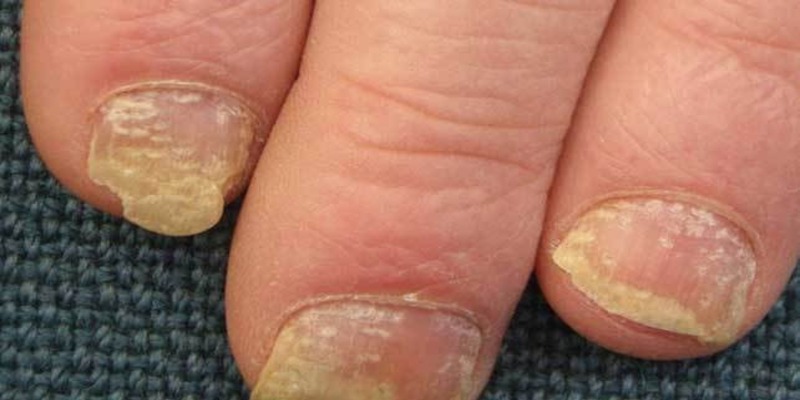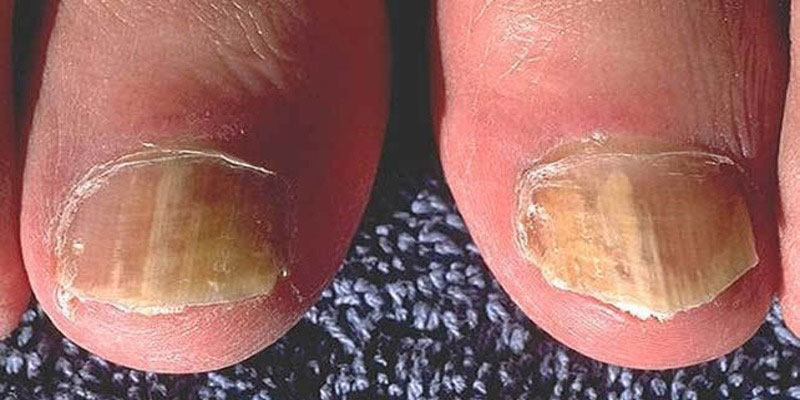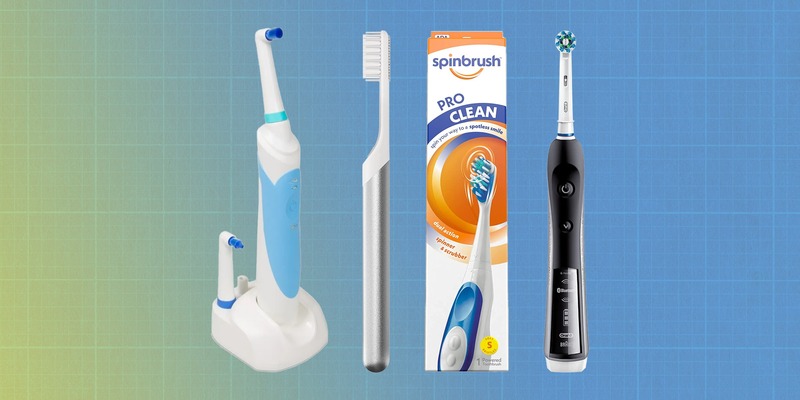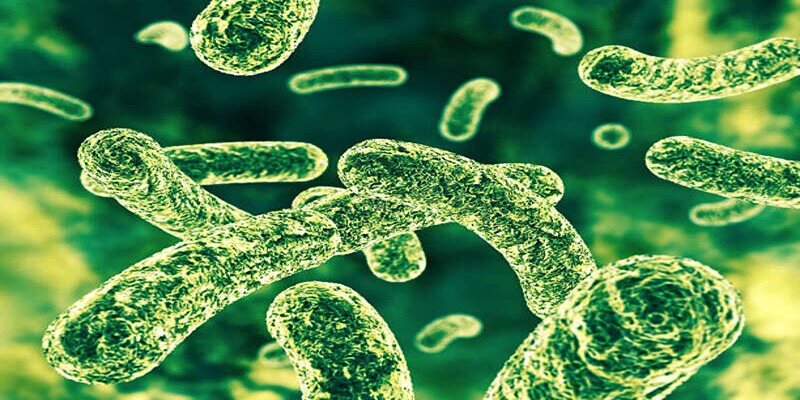The overproduction of skin cells that characterizes the inflammatory autoimmune illness psoriasis can lead to the development of thick, itchy, scaly patches on the skin. Nails, especially fingernails and joints, are also susceptible to this condition.
Approximately 7.4 million Americans have psoriasis, according to reliable sources. Some estimates place the percentage of persons with psoriasis whose nails have changed at 82%.
Psoriatic arthritis is a joint ailment associated with nail abnormalities in about 80% of patients. Medical professionals have yet to determine why some people are affected while others are not.
Psoriasis Of The Nails: The Symptoms

Psoriasis of the nails can take several forms. The severity of the symptoms varies.
Pitting
The hard surface of a nail is called the nail plate, which lies atop the nail bed. Keratin is a protein that becomes hard over time and may be found in the skin and hair. Nail psoriasis results in cell loss on the nail plate.
This can cause tiny pits in your fingernails or toenails, making it seem like you tapped your nails with a pen. Everyone has their unique amount of divots.
In some instances, a person's nails may have no pits, while in others, there may be hundreds. The depth of the trenches might vary.
Variations In The Nail Bed
If the mechanisms that hold your nails together are weak, your nails may pit and disintegrate. People living with Psoriasis often have a fungal infection of the nails called onychomycosis, which can cause the nails to thicken.
Also, the chalky substance under your nail might cause it to thicken. The condition is known as subungual hyperkeratosis and can cause significant discomfort.
Splitting The Nail Bed
The nail plate can lift off the nail bed, the layer of skin beneath the nail, at times. Onycholysis describes the process of separation. The area under your nail is left unfilled.
The initial sign of nail psoriasis is often a yellow discoloration near the nail's tip. The nail color and lifting might spread to the cuticle. Infection caused by bacteria entering the cuticle area can discolor the entire nail.
Nail Discoloration
You may also notice a shift in your natural nail color. There may be a yellowish-red spot in the nail bed. The oil-drop spot derives its name from how it looks like a drop of oil under the nail plate.
Psoriasis can also cause the lunula, the slight half-moon shape at the base of your nail, to turn a crimson color. Blood vessel dilation is to blame for this condition.
You may also observe fine, purplish-red streaks on your fingernails. Splinter hemorrhages are what we're talking about here. Yellowing and browning of fingernails and toenails are also possible. Nails that are crumbling tend to turn white.
How To Deal with Nail Psoriasis

In most cases, dermatologists will utilize the same therapies for psoriasis as for nail psoriasis. The optimum therapy for you will depend on several things. McCarty takes a variety of factors into account, including the age of the patient and the severity of their nail disease.
Additionally, she consults with a rheumatologist to rule out psoriatic arthritis. Unfortunately, nail psoriasis is notoriously difficult to cure, and it often takes several treatments to see improvement.
McCarty notes that the average treatment time for improved nail health is between four and twelve months. There are a variety of effective therapies available.
Medicines Are Applied To The Skin
Topical medications, either OTC or prescribed, may be recommended by dermatologists. Nail medicines are applied topically once or twice a day. Nail psoriasis treatments that are applied topically come in several kinds.
- ointments
- creams
- emulsions
- manicures
Some people with psoriasis report a slight reduction in their symptoms after using topical corticosteroids such as clobetasol propionate or betamethasone dipropionate.
Vitamin D topical therapies have been shown to decrease inflammation and inhibit the overproduction of skin cells. Thicker nails are alleviated by their ability to reduce under-nail cell accumulation.
Injections of Corticosteroids
A dermatologist may inject a corticosteroid under your nail if necessary. Injections of corticosteroids are effective for treating:
nail thickening
• ridges
• separation
Advice For Preventing
Consider implementing the following measures to lessen the frequency of nail psoriasis flares:
- Keep nails short to minimize damage or nail bed lifting. Maintaining a regular nail-trimming routine will also reduce the likelihood of accumulation occurring in that space.
- Avoid chewing or picking at your nails and pushing back your cuticles. Skin injuries often trigger psoriasis outbreaks. The name for this phenomenon is Koebner's paradox.
- Wear gloves when gardening, dishwashing, or working in water. Wearing cotton gloves underneath vinyl or nitrile gloves will provide the best protection possible.
- Clean and dry your nails to avoid infection.




